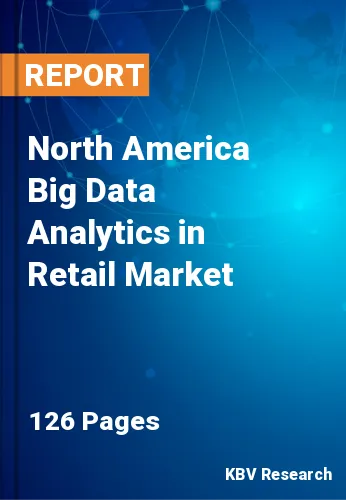The North America Big Data Analytics in Retail Market would witness market growth of 21.8% CAGR during the forecast period (2020-2026). In the super-competitive retail sector, customary sources of decision making -, for example, sales history, and executives’ experience and instinct - are presently inadequate. To make viable, user-driven choices, retailers, and brands use retail analytics to predict customer needs and give a smooth user experience. Customer analytics in retail can also assist you with improving user experience and loyalty by knowing definitely which purchasers are purchasing which items - and customizing your marketing dependent on customer information.
Retail organizations' functions frequently work in silos - which implies their data insights are divided, captured in pockets across the company. To get a thorough perspective on business results, including customer patterns and development strategies, your organization needs to bind together and incorporate all its data. Combining your data can assist you to make better business decisions quicker by utilizing a single, trusted source of data about your items and users. What's more, utilizing a retail dashboard provides you an elevated level snapshot review of your most significant competitive performance measurements, including pricing, promotion, and catalog movement.
Generally, retailers have been user-centered. This is clear in the commitment and energy that retail employees show when attending to customers. They recognize what their users need. Workers are trained to be alert and humble while attending to customers. They are urged to obtain deep information about the item with the goal that they can serve user needs. Feedbacks from users help in formulating future advertising procedures and store tasks. Thus, it impacts supply chain management. In any case, that is set to change. To enhance the performance of the operation across all channels, retail data analytics can support retailers and suppliers screen store-level demand in real-time to guarantee top-rated products stay in stock.
Based on Component, the market is segmented into Software and Services. Based on Deployment Type, the market is segmented into On-premise and Cloud. Based on Organization Size, the market is segmented into Large Enterprises and Small & Medium Enterprises. Based on Application, the market is segmented into Supply Chain Operations Management, Sales & Marketing Analytics, Customer Analytics, Merchandising Analytics and Others. Based on countries, the market is segmented into U.S., Mexico, Canada, and Rest of North America.
Free Valuable Insights: Big Data Analytics in Retail Market in North America is expected to register a CAGR of 21.8% during the forecast period (2020-2026)
The market research report covers theanalysis of key stake holders of the market. Key companies profiled in the report include IBM Corporation, Microsoft Corporation, Oracle Corporation, SAP SE, Salesforce.com, Inc., Adobe, Inc., Teradata Corporation, MicroStrategy, Inc., Alteryx, Inc., and Zoho Corporation Pvt. Ltd.
Market Segmentation:
By Component
By Deployment Type
By Organization Size
By Application
By Country
Companies Profiled
Our team of dedicated experts can provide you with attractive expansion opportunities for your business.

